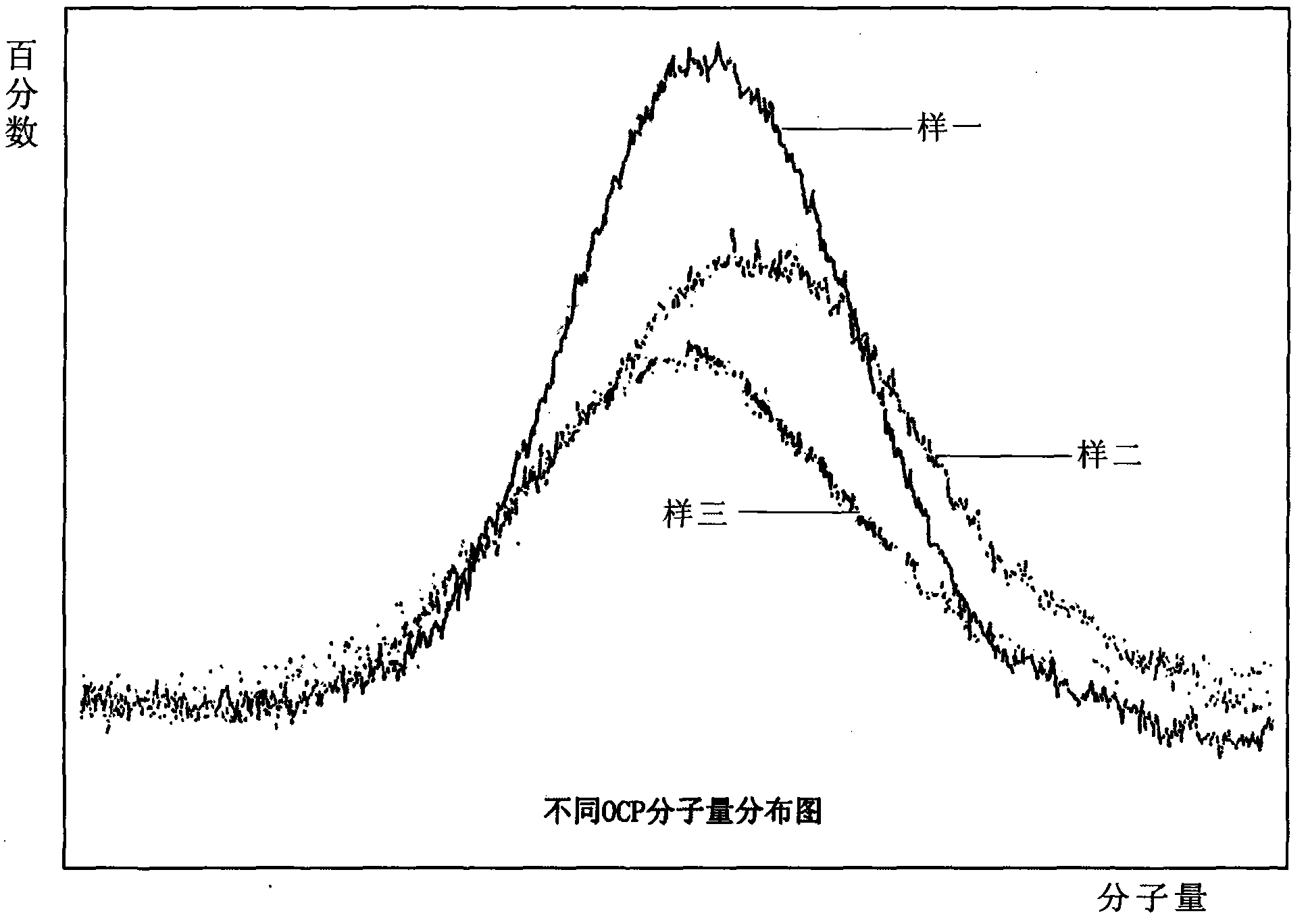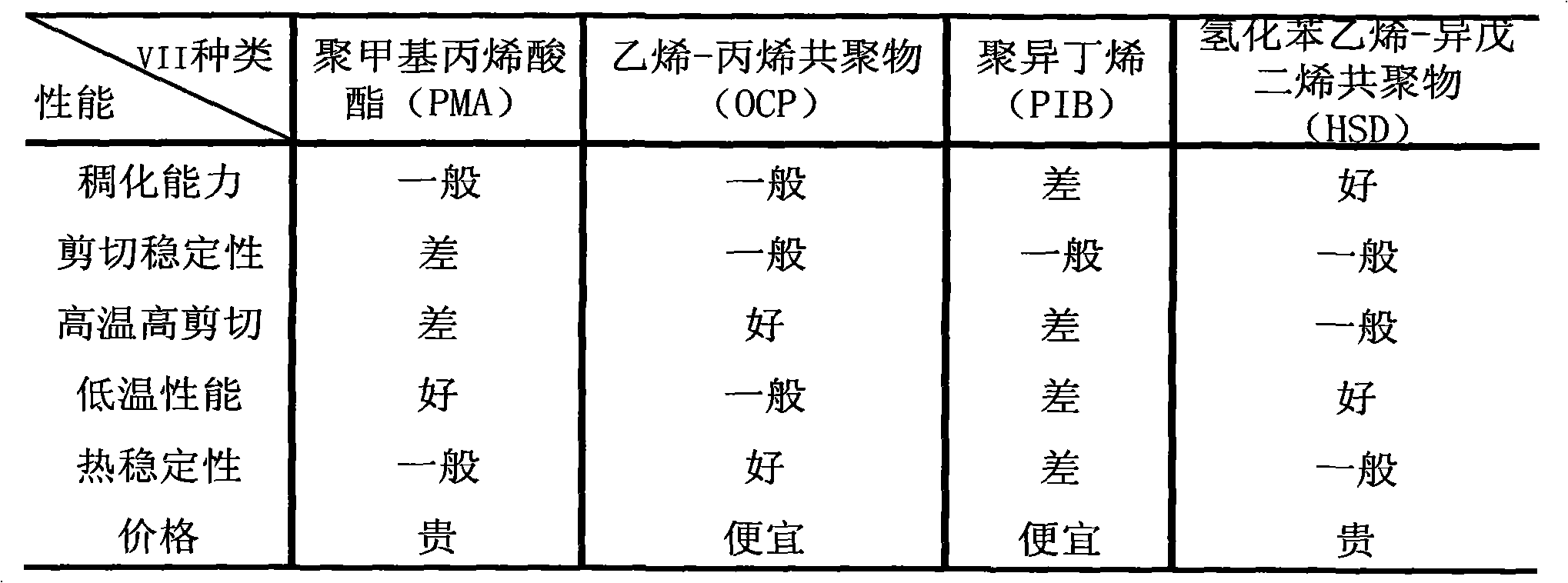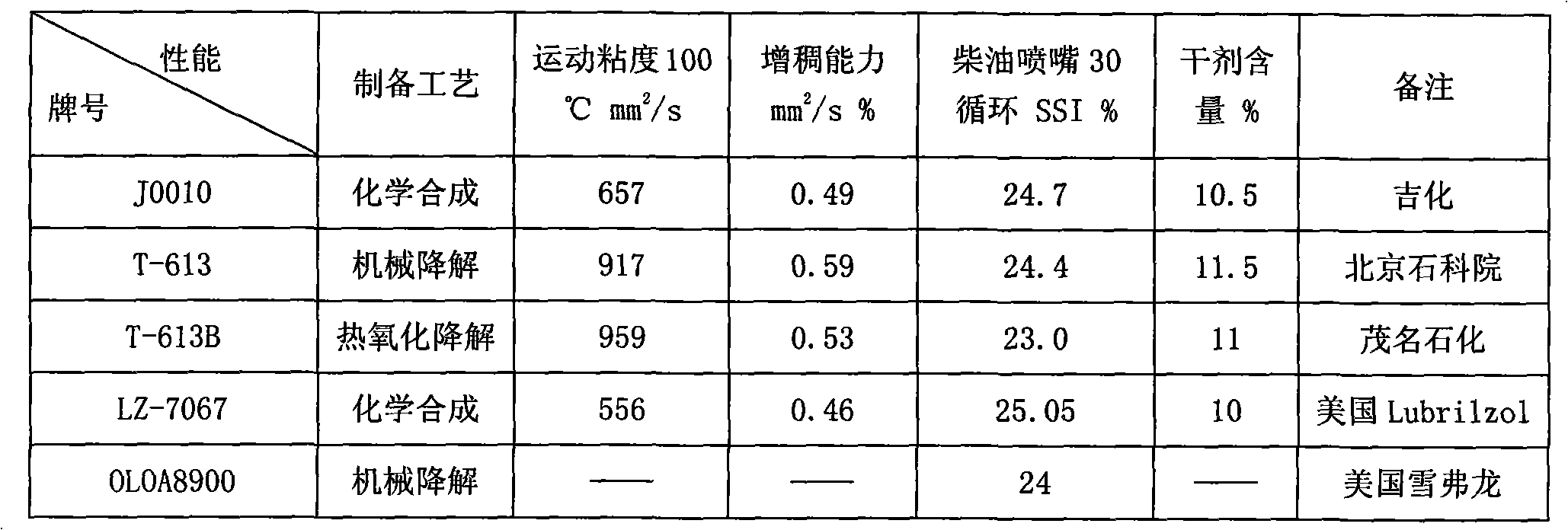Viscosity index improver of catalytic modified ethylene propylene copolymer and preparation method thereof
A technology for viscosity index improvement and ethylene-propylene copolymer, which is applied in the field of catalytically modified ethylene-propylene copolymer viscosity index improver and its preparation, and can solve problems such as being only applicable, unable to meet higher requirements, and unreachable
- Summary
- Abstract
- Description
- Claims
- Application Information
AI Technical Summary
Problems solved by technology
Method used
Image
Examples
Embodiment 1
[0044] 1. Add a certain amount and a certain proportion of base oil into the above reaction kettle, heat the base oil to 90°C under stirring, add ethylene-propylene rubber cut into small pieces from the feeding port, and at the same time, let the air flow through it. The input volume is 1000ml / min. Continuously raise the temperature to dissolve the ethylene-propylene rubber in the base oil.
[0045] 2. After the heat melting is over, add a certain amount of catalyst VTR-6 when the temperature rises to 140°C, and continue to heat up.
[0046] 3. When the temperature rises to 150°C, air is introduced from the bottom coil of the kettle to carry out catalytic thermal oxidation degradation, and the air intake rate is 3000ml / min. After calculation for about 3 hours, sampling and analysis, when the viscosity of the tested sample reaches the central control index, the reaction is terminated, the base oil is added for calculation, and the temperature is lowered to 120°C to filter and ...
Embodiment 2
[0050] 1. Add a certain amount and a certain ratio of base oil into the above reaction kettle, heat the base oil to 110°C under stirring, add ethylene-propylene rubber cut into small pieces from the feeding port, and at the same time, let in air, and the air will The input volume is 1200ml / min. Continuously raise the temperature to dissolve the ethylene-propylene rubber in the base oil.
[0051] 2. When the heat melting is over, add a certain amount of catalyst VTR-6 when the temperature rises to 150°C, and continue to heat up.
[0052] 3. When the temperature rises to 180°C, air is introduced from the bottom coil of the kettle to carry out catalytic thermal oxidation degradation, and the air intake rate is 3000ml / min. After calculation for about 3 hours, sampling and analysis, when the viscosity of the tested sample reaches the central control index, the reaction is terminated, the base oil is added for calculation, and the temperature is lowered to 120°C to filter and disch...
Embodiment 3
[0056] 1. Add a certain amount and a certain proportion of base oil into the above reaction kettle, heat the base oil to 80°C under stirring, add ethylene propylene rubber cut into small pieces from the feeding port, and at the same time, nitrogen gas is introduced, and the gas is ventilated. The input volume is 1300ml / min. Continuously raise the temperature to dissolve the ethylene-propylene rubber in the base oil.
[0057] 2. After the thermal melting is over, when the temperature rises to 180°C-195°C, add a certain amount of catalyst VTR-6 in batches, and continue to heat up.
[0058] 3. When the temperature rises to 200°C, air is introduced from the bottom coil of the kettle to carry out catalytic thermal oxidation degradation, and the air intake rate is 3000ml / min. After calculation for about 5 hours, sampling and analysis, when the viscosity of the tested sample reaches the central control index, the reaction is terminated, the base oil is added for calculation, and the...
PUM
| Property | Measurement | Unit |
|---|---|---|
| dispersity | aaaaa | aaaaa |
| viscosity index | aaaaa | aaaaa |
Abstract
Description
Claims
Application Information
 Login to View More
Login to View More - R&D
- Intellectual Property
- Life Sciences
- Materials
- Tech Scout
- Unparalleled Data Quality
- Higher Quality Content
- 60% Fewer Hallucinations
Browse by: Latest US Patents, China's latest patents, Technical Efficacy Thesaurus, Application Domain, Technology Topic, Popular Technical Reports.
© 2025 PatSnap. All rights reserved.Legal|Privacy policy|Modern Slavery Act Transparency Statement|Sitemap|About US| Contact US: help@patsnap.com



